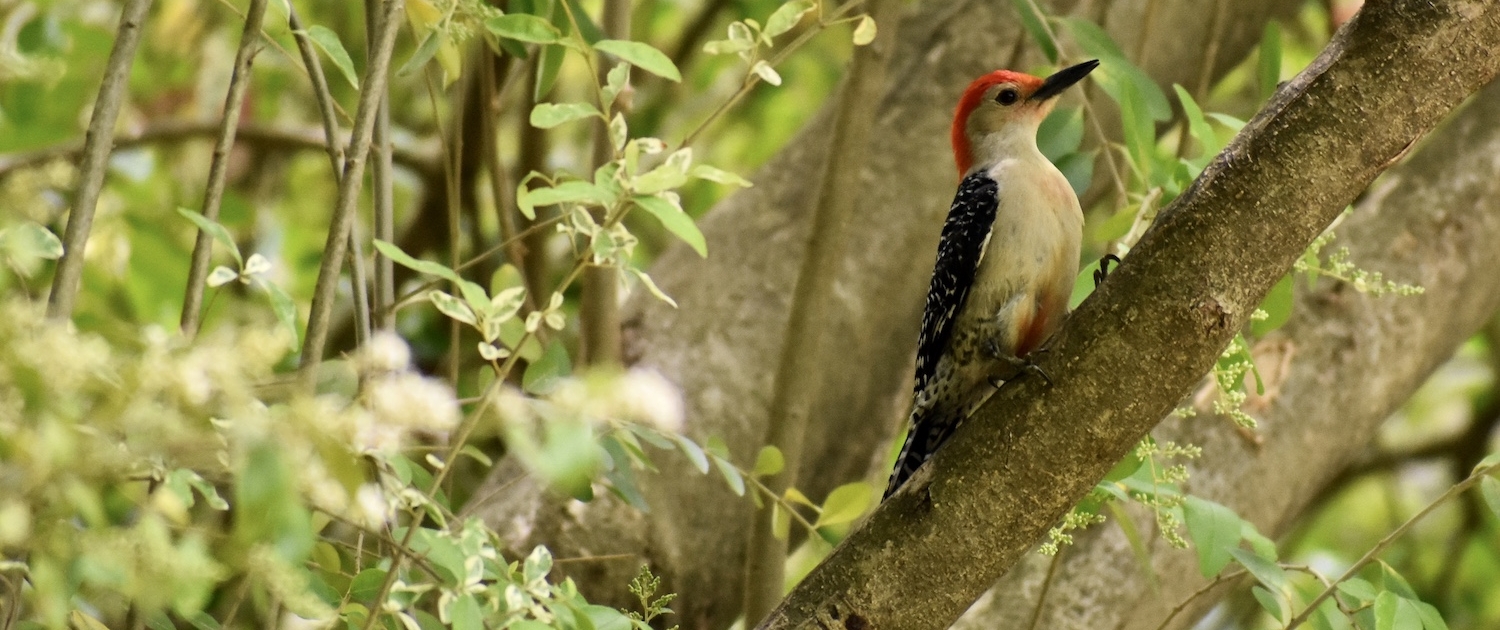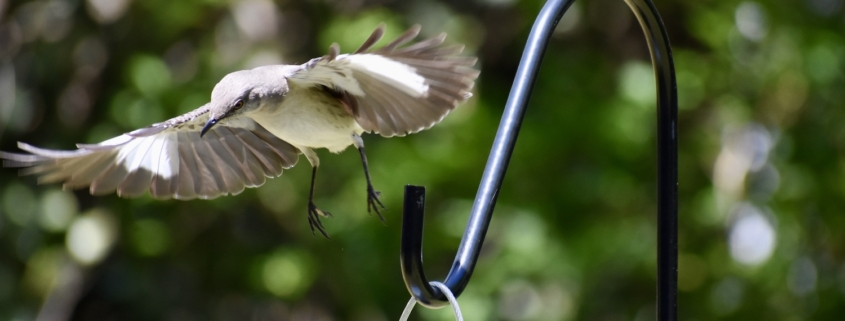Gear Up for the 2022 Great Backyard Bird Count
Cary, NC — Watching birds is a delight. You don’t need to know a thing to enjoy them.
For those who do enjoy spotting our feathery friends, curiosity inevitably asserts itself and we want to know their names. We want to be informed. For those who wish to contribute to the Great Backyard Bird Count, which this year is held February 18th – 22nd, knowing for sure is a must. But how to do this?
It is not too difficult to identify the most common birds in our backyards. All one really needs are the right tools. “The Big Three”, for me at least, are a notebook, a field guide, and an app.
Notebook

Your absolute best friend in identifying a bird is a notebook of some kind.
Some birders use pencil and paper, some record to a phone digital notepad, and some take photos. Any or all of these are just fine. I love it when people who ask me to ID a bird share a photo.
Written notes should cover everything you can see — What size is the bird? What does its bill look like? What colors do you see? Are there different colored markings on the bird?
As you’ll discover, little details can make a great deal of difference in pinning down a bird identification.
Photos are wonderful but keep in mind that smartphone cameras are rarely going to get the job done. They don’t perform well at the distances you need. Point and shoot cameras are not too bad but will have their limitations. And you want one close at hand in case you see an interesting bird.
Field Guides
A helpful reference book that you can keep handy in your home, car, or anywhere you see birds, is a field guide. These are books designed to assist in the identification of birds, and even other live or inorganic parts of nature.
They include illustrations, written descriptions, and “range maps” showing where the bird can likely be found at different times of the year. There are a number of them on the market and typically cost about $20. I most often turn to Peterson’s or to Kaufman’s, but there are excellent alternatives in the Stokes, Sibley, Audubon, and others. You can purchase one at any good bookstore or online.
When using a field guide, I strongly suggest making as many notes as possible about the bird you wish to identify first, and only later consult the book. Birds move quickly enough that you might lose sight of it as you fumble with pages!
Apps
Our internet age has made available some wonderful tools to identify birds that can be accessed on a desktop or laptop computer or even on your phone. My faithful Samsung is armed with several, including Merlin, produced by the famous Cornell Lab of Ornithology, and the Mitch Waite Group’s iBird.
Merlin works on a sort of “twenty questions” basis, but does it in just five! It will ask you to provide clues on aspects of a bird and as you go along the list of possible candidates is reduced to a few choices. You can then compare photos for the likeliest choice. It’s free and easy to use.
iBird is a database of birds but is searchable on characteristics like colors, habitat, shape and size and so forth. It’s a lot less facile than Merlin in quick identification but stocks many more photos, illustrations, range maps, and other information. If you’re serious about bird ID, the $14.99 price tag will pay off.
Want more fun? Consider an app like BirdNet (free from Cornell Lab). With this app you record an unfamiliar bird song or call and the Artificial Intelligence at work in the app tries to identify the bird, usually by listing a choice or two in order of probability. The app is not foolproof and other sounds will throw it off, but it can help identify possibilities you can follow up with, using a field guide.
Challenges

Identifying the birds you see will be fun, but there may be challenges and frustrations. Don’t be discouraged if you may not be able to figure some out. Take delight in what you can pick out and remember and build skills over time. What challenges might you face? These are some I hear about regularly.
- Hawks can be tricky. Coopers’s Hawks and Sharp-shinned Hawks can both be in backyards here in winter and look a lot alike. They differ mostly in size. Cooper’s are bigger and have a more noticeable white tip to their tails.
- Sparrows are hard. You can easily see White-Throated Sparrows, Song Sparrows, Chipping Sparrows and sparrow-ish Brown Thrashers around here. When you see “Little Brown Guys” take notes on how the bird is streaked, whether there are standout white or rusty patches, and so on to later be able to tell them apart.
- American Goldfinches look very different in winter! They’re rather drab and can be confused with other birds, such as Yellow Rump Warblers and Ruby-Crowned Kinglets.
- Some woodpeckers can fool you, especially discerning a Downy Woodpecker from a Hairy Woodpecker. In that choice look at the length of bill as a determinant.
Most of all, have fun! Enjoying and identifying birds can be a lifetime hobby for every member of the family.
Use the Great Backyard Bird Count to get started.
Story by David Lindquist. Photos by Ashley Kairis.
All the Cary news for the informed Cary citizen. Subscribe by email.




Thanks, David. I’ll be counting at home and we’ll be counting at Kids Together Playground, too, on Saturday, February 19, 10:00-11:00 am. It’s family friendly and free!